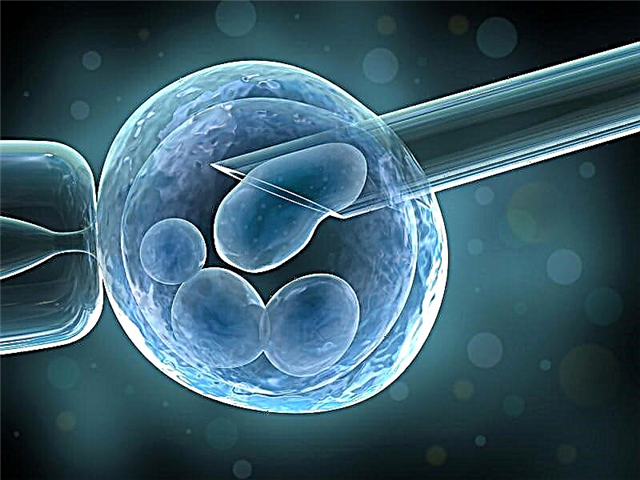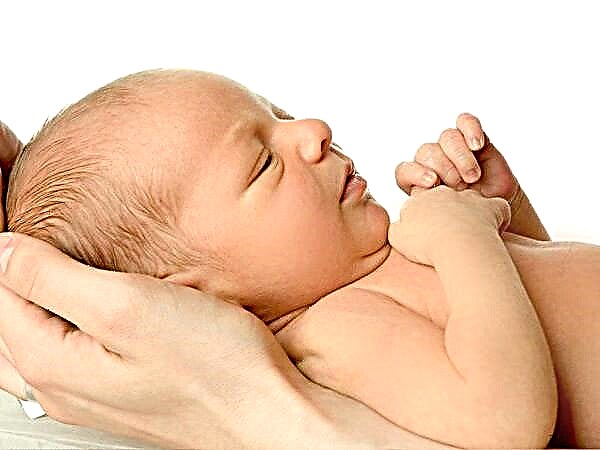
The combination of bouts of vomiting with pain in the abdomen is perceived by parents to be quite alarming, as it often indicates a child's illness. In what cases can a child have a stomach ache and vomiting and how should parents act?
How does it manifest?
In the child, the muscles of the stomach begin to contract, as well as the muscles of the abdominal wall, which provokes the removal of all the contents of the stomach out through the mouth. Usually, before this, the child feels nausea, he shows anxiety, turns pale, the skin of his limbs becomes cool.
The pressure with which the contents of the stomach are thrown out can be very strong. The masses highlighted by the baby in most cases are simply undigested food, but quite often they can have impurities and an unpleasant odor.
The more often there is an attack of vomiting, the more weakened the baby will become. With repeated vomiting, as well as in the case of attaching high temperature and liquefied stool to it, the risks of dehydration increase.
Abdominal pains that appear simultaneously with bouts of vomiting are dull, cramping, sharp, aching, cutting, of varying severity and duration. Most often, the child points to the navel when asked to point out where it hurts. Also, painful sensations may appear in the upper right part and in other places.

Symptoms and possible causes, what to do?
Abdominal pain, appearing simultaneously with episodes of vomiting, are both manifestations of functional disorders of the digestive system, and symptoms of serious diseases.
Let's consider the possible causes of the combination of such symptoms in more detail:
Should I call a doctor right away?
Both vomiting and abdominal pain can serve as signs of dangerous diseases, so it is worth showing the child to the doctor to determine the cause of such symptoms. Indications for an immediate call to an ambulance should be the following situations:
- The child has indomitable vomiting.
- The baby's condition worsened greatly.
- Vomiting and pain were provoked by the use of toxic substances or spoiled food.
- I can't get the child drunk.
- The baby has begun to dehydrate.
- Blood was seen in the vomit.
- The child has no stool.
- Vomiting and pain were accompanied by diarrhea and fever.

First aid rules
Immediately after calling a doctor, you should:
- Wash the child and rinse the baby's mouth with clean water.
- Lay the child so that his head is turned to the side or slightly raised (you can put a pillow).
- Start drinking in small portions.
You should not wash your baby's stomach on your own, give the baby any medicine, apply something hot or cold to the stomach, or feed the baby (except for babies).
Treatment
Since vomiting, combined with abdominal pain, can be a sign of a variety of diseases, self-medication is unacceptable. Only a doctor should prescribe any medication to a child with these symptoms.
If the reason for such a clinical picture is one of the surgical pathologies, the child will be sent to an ambulance to a surgical hospital and the issue of the operation will be resolved. A gastroenterologist will deal with the treatment of gastritis and peptic ulcer disease. With an intestinal infection, the doctor will prescribe antibiotics (if necessary), sorbents, probiotics and other medications to the baby, based on the situation, diagnosis and severity of the child's condition.
In case of poisoning and infection of the gastrointestinal tract, sufficient drinking for the baby plays an important role. The child is given saline solutions, non-carbonated mineral water, rosehip decoction, dried fruit compote. Read about what can be given to children with vomiting in another article.

How do you know if treatment is working?
You will notice that the baby's condition begins to improve when the vomiting stops and the abdominal pain disappears. The child will gradually become more active, his appetite and good mood will return.
Tips for parents
- To solder a child, it is best to use special solutions, which should be in the first-aid kit in every home where there is a small child. If there are no such preparations at hand, you can prepare a saline solution yourself by stirring sugar (eight teaspoons) and salt (a teaspoon is needed) in warm water (in one liter). You can also add a quarter spoon of baking soda, and replace sugar with honey, if the child does not have allergic reactions to this product.
- While waiting for a doctor, you should not give any pain relievers, or antiemetics, or antispasmodics. If pain and vomiting are caused by a surgical pathology, such medications will interfere with timely diagnosis of the disease and can cost the child's life.
- If the cause of vomiting and pain is poisoning or intestinal infection, as soon as the child's condition begins to improve and the child asks for food, give him some warm liquid food that will not irritate the stomach. Such food can be liquid rice porridge, slimy soup, jelly. The child's menu should be expanded carefully, increasing portions of meals and adding new products within 5-10 days from the onset of the disease.



